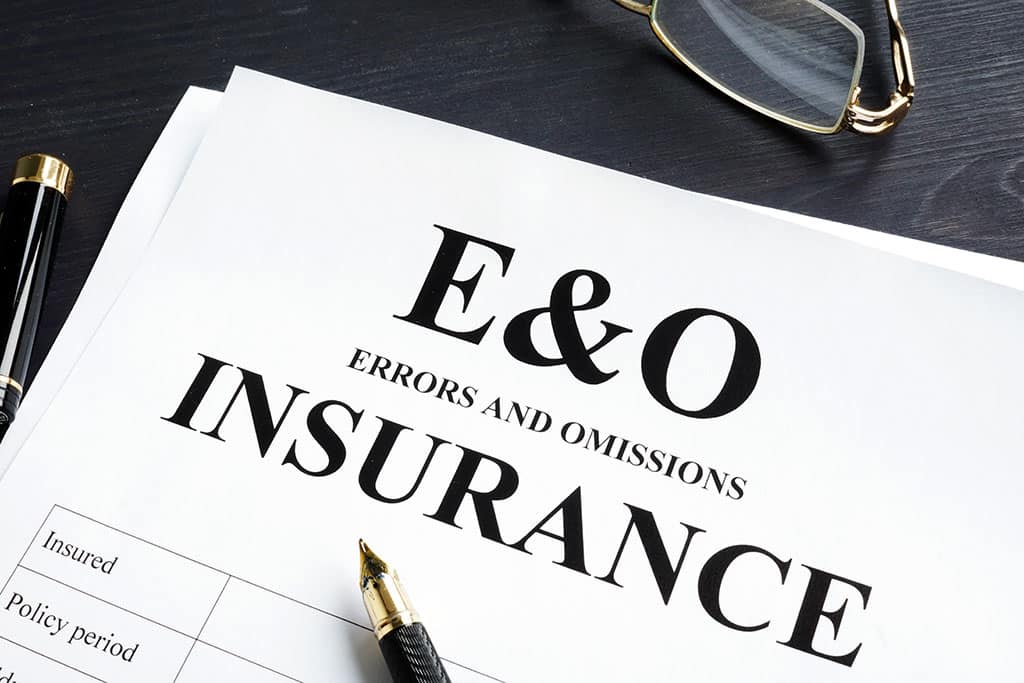When alarm installers first search for an insurance package that works for their business, they tend to have a lot of questions about what type of insurance is necessary for the installation work they do. At El Dorado we’re happy to provide the details after a discussion about your specific business, but today we wanted to dive into a particularly common topic: Errors and omissions insurance, sometimes also called “professional liability” insurance.
It’s not immediately clear what errors and omissions insurance does, but it’s an especially important inclusion for alarm installers. Let’s go over what it covers and a few details you should know about how it works.
Errors and Omissions Insurance Basics
This type of insurance covers the different kinds of mistakes that a professional can make on the job — that’s why it’s also called professional liability insurance. It’s often abbreviated as “E&O” to save time.
E&O insurance is especially important for the types of work that can have a direct impact on someone’s home, equipment, vehicle, or other assets. An alarm system for security or fire alarms is the perfect example because it’s both very important for safety reasons and often integrated into a home or business.
If something goes seriously wrong with an alarm installation project, even months or years later, then owners may place blame on the installer. That can lead to lawsuits, commonly civil suits that claim damages were caused by an error that the installer made. Those lawsuits may seek payments from alarm installation business owners, employees, or office managers. E&O insurance covers the legal costs of those lawsuits and other fees that may be involved.
The Types of Errors Alarm Installer E&O Insurance Typically Covers
What exactly does an error mean? It can take many forms, but it’s usually something that causes damage to an alarm system owner’s assets or health, as well as the assets or health or others on their property. Common examples include:
Negligence:
This can refer to something like not connecting alarm systems to a monitoring service as required — something that has led to very large lawsuits before! It may also refer to hooking up a system poorly so that it fails later on, or forgetting key parts of a system that were supposed to be included. If a system doesn’t work because of negligence, owners often seek compensation for any damages incurred by burglaries or fires that happen after installation.
General installation errors:
Mistakes with wiring, for example, can cause serious damage and even electrical fires. Or sometimes installers may make serious mistakes like installing sensors in the wrong places, violating building codes and rendering systems useless. Or they could choose settings for a system that make it work incorrectly.
Damage to the Property:
E&O insurance may also apply if any part of the property was damaged during the installation. That could include damage to walls or flooring, damage to ceilings when installing sensors or cameras, and damage to electrical systems.
Breaches of Contract:
A breach of contract may occur if an installer didn’t install by the due date cited in the contract, or installed the wrong devices compared to what the contract required. E&O insurance may also apply if a client believes they were lied to, given poor advice, or otherwise mislead.
Employee injuries:
If an employee is injured during their professional work, they may sue their employer if they believe work demands caused their injury.
Keep in mind, even if clients or employees aren’t able to prove their claims, E&O insurance is still designed to pay for the legal expenses involved and similar costs.
Extended Reporting Periods Are an Option for E&O Insurance
E&O insurance is subject to a particularly important clause called extended reporting period or sometimes “tail” coverage. Basically, without an extended reporting period, the E&O insurance ends soon after a policy is changed or cancelled. That’s not normally an issue, but sometimes alarm installation issues crop up years after an installation occurs. Owners won’t usually hesitate to file a suit against an installer if they believe they have a case, no matter how much time has passed since the work was done.
In these cases, an installer may have retired or moved on to a different line of work. Adding a rider for an extended reporting period will help keep coverage in place as long as the policy was active while the installation occurred. That can save a lot of headaches in the long term.
Final Notes on Errors and Omissions Insurance
Now that you know what errors and omissions insurance is designed to cover, we suggest you take a look at your current policy and see just what your limits are. Different types of policies have different limits for how much E&O will pay out to cover something like a settlement or damage payments awarded by a court. Talk to an expert from El Dorado and we can go over the details, if your coverage limits match your industry and region, and other important information.
As a professional alarm installer, be sure you are protected the same way your clients are. Give El Dorado Insurance a call today to make sure your insurance coverage is as comprehensive as the coverage of the alarms you install.






